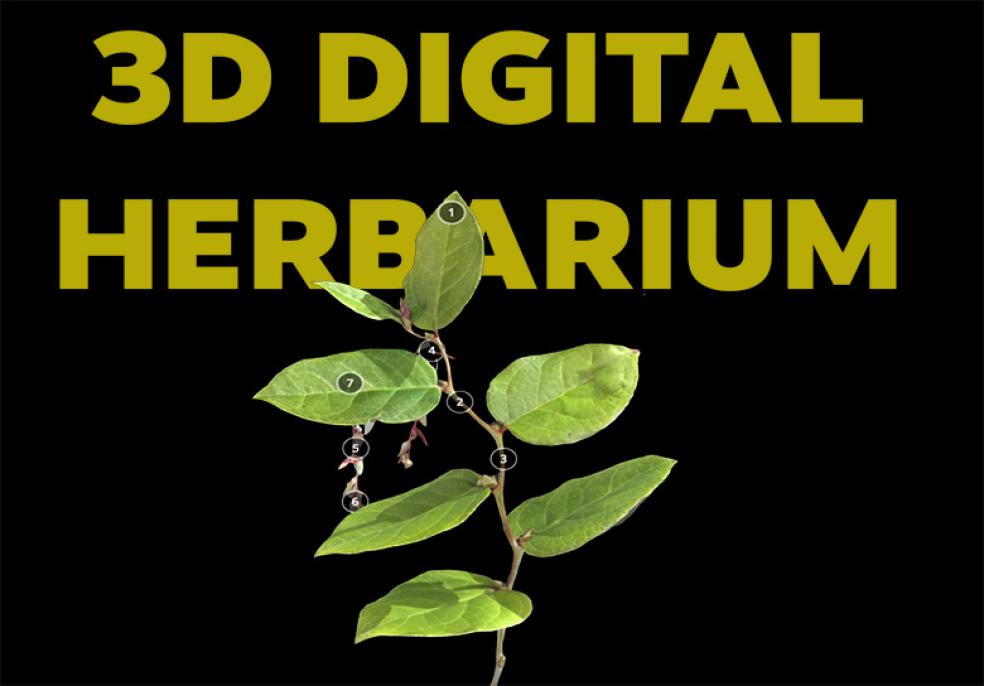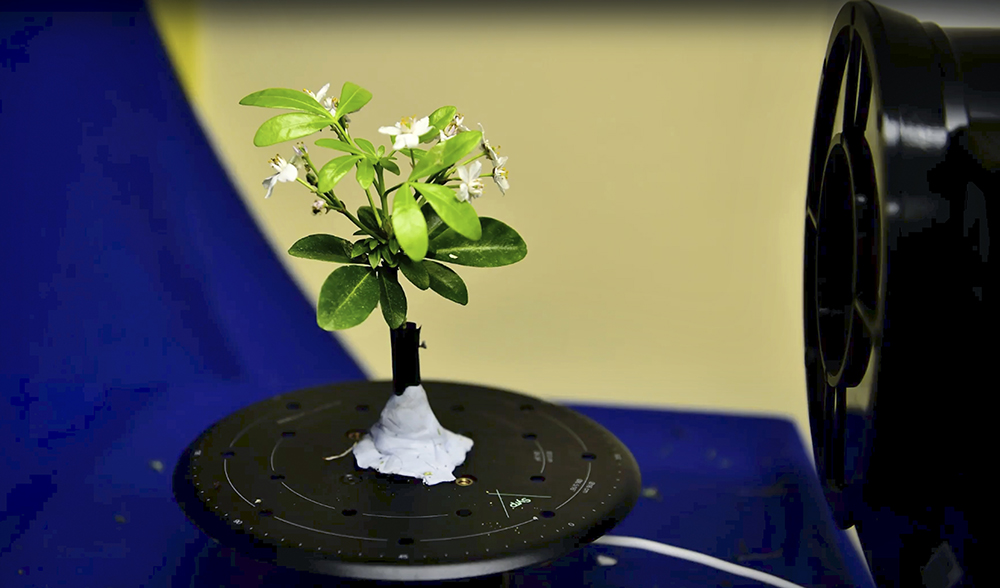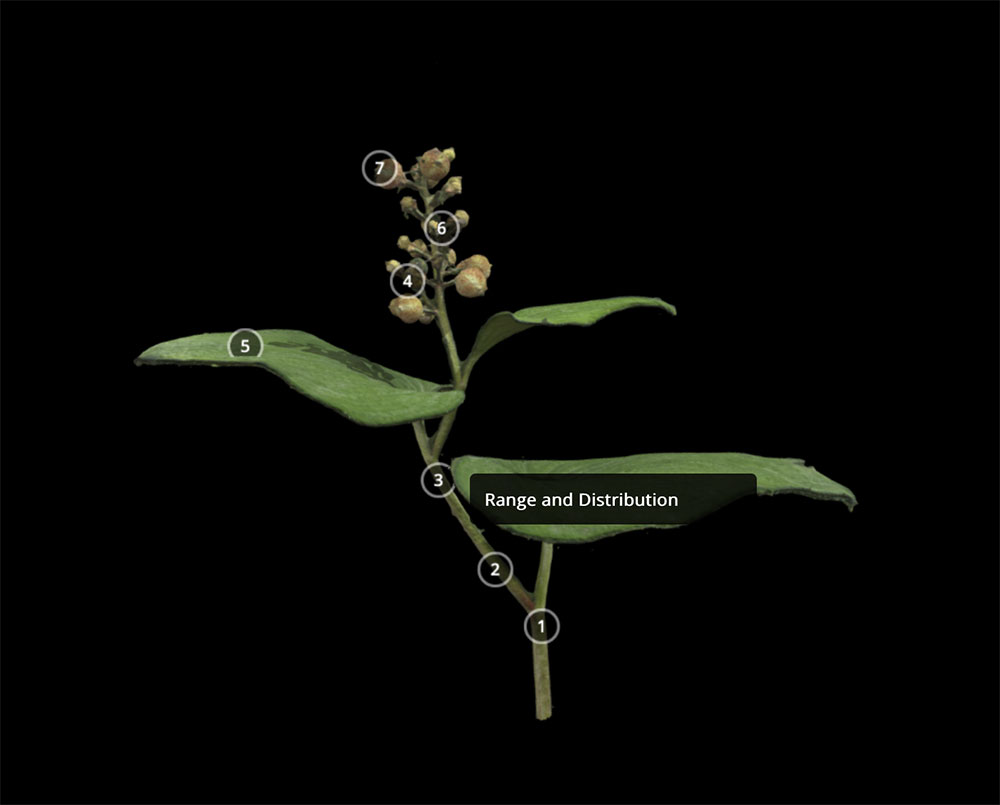
The project is one of the first of its type in the world, according to Cyril Oberlander, Library Dean and project sponsor.
This project uses immersive technologies to create interactive 3D models of local flora that help users visualize, identify, and learn about plants, their habitat and life cycles, and more. The images and data are condensed into an easy-to-digest package that’s free and open for anyone to use.
The 3D digital herbarium is growing thanks to a multi-disciplinary effort with Botany and Computer Science students. The Library team is led by programmer and project manager, AJ Bealum (‘22, Computer Science). They collect each plant and photograph them at multiple angles to create a 360-degree view of each. The team also developed software and a website to showcase the models—which can be viewed in both augmented or virtual reality—and optimized models for phones and touchscreens.

It takes anywhere from 100-300 photos digitally stitched together to build one 3D model of a single plant. Since beginning the project in January 2023, the team has spent more than 3,000 hours creating the 3D digital herbarium, says Bealum. It so far showcases nearly 50 different local plants. The project is ongoing and more flora will continue to be added over time.
Typical herbaria, such as the University’s Vascular Plant Herbarium, include dried, pressed specimens, and are important tools for species identification and discovery. Cal Poly Humboldt’s 3D digital herbarium showcases fresh plant clippings in a 3D format with incorporated data, and makes the collections available online, expanding access and interactive learning opportunities.
Similar to the Library’s Anatomage Table, the herbarium offers layered and zoomed-in views of each plant. Users can click on different points in the model for information about the flora’s foliage, bark, reproductive system, history, use, and more.
Collecting the plants to showcase requires the project’s botany assistant, Botany major Heather Davis, to scour the local area for flora. After gathering samples, Davis takes them to a lab on the first floor of the Library. There, specimens are placed on a rotating platform where each is manicured and photographed. Photos are then used to craft a 3D model.

The team sculpts larger models of plants such as the coast redwood by using a modeling software. They then take images of foliage and bark, and add that to the tree skeleton they’ve created.
While the collection currently focuses on plants found locally, the project plans to expand to include flora and fungi from other regions throughout California.
Projects like this offer students collaborative, hands-on experience and valuable interdisciplinary opportunities. Students involved in the project learn not just about each other's disciplines, and photogrammetry, but also how to operate equipment, including cameras and editing software.
“The interdisciplinary aspect is absolutely crucial. Nobody really works in a vacuum anymore,” says Bealum, who further emphasizes the need for collaboration in the era of technology and AI.

“This project began as a software engineering idea sponsored by the Library for students in Dr. Sherrene Bogle’s computer science capstone class—which included AJ—to learn about a real-world challenge,” says Oberlander. “It has grown from prototype to immersive technology to inspire learning botany and beyond. The Library develops these innovative and transformative experiences as an opportunity to co-create solutions with students, and to help launch their careers.”
The 3D digital herbarium will be released as open source, and demonstrates how powerful student real-world projects can be.
“A main goal is to get it integrated into courses and allow students to create their own models and provide their own information on local species,” says the project’s student programmer, Computer Science major David Yaranon. Doing so will allow students to build upon the collection and get work published.
For Davis, the project’s experiential learning process is particularly exciting. “As a scientist, I think it's a fun project to think about the engagement that it can have with students and being able to teach them about cataloging plants and getting them engaged with our local flora,” she says.
The 3D digital herbarium launches this January. To mark the milestone, the Library will host a celebration on Thursday Jan. 25, from 2—5 p.m. in the Scholars Lab, located on the third floor of the Library. A large touchscreen and tablet will be available for patrons to use. Users can also access the site’s app-free augmented reality feature via mobile devices.